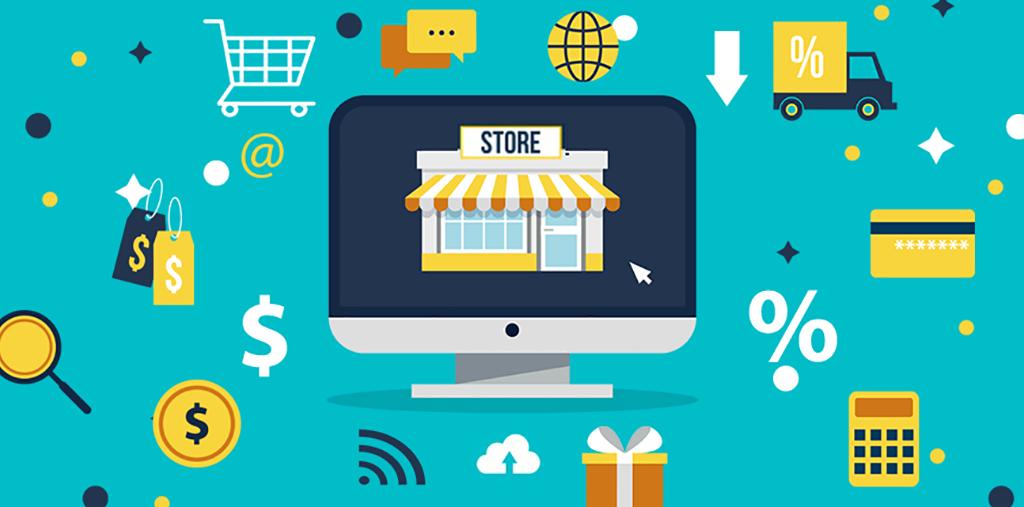The Future of Online Shopping: How E-Commerce is Changing the Way We Buy (image: laptop with shopping cart symbol)
In today's fast-paced digital world, e-commerce has become the foundation of modern shopping. Fashion, gadgets, groceries, and digital services are all available with a few clicks. Online shopping is no longer a luxury; it has become a need for people all over the world, including Pakistan, where digital adoption is increasing at an unprecedented rate.
1. The expansion of e-commerce worldwide
An instance of the global e-commerce growth chart
Over the last decade, online shopping has become a trillion-dollar industry. According to current predictions, worldwide e-commerce revenues are projected to exceed $7 trillion by 2025. The shift was driven by:
Smartphone penetration - Mobile shopping apps facilitate internet transactions.
Secure payment channels make customers feel safer when shopping online.
Social media influence - Platforms like Instagram, TikTok, and Facebook influence purchasing decisions.
The pandemic effect of COVID-19 has hastened digital shopping and made it a habit.
For Pakistani firms, this brings both opportunities and difficulties. Companies who embrace digital retailers can capitalize on a burgeoning market, whilst those that stick with old methods risk falling behind.
2. Benefits of Online Shopping
Happy customer shopping online on smartphone
E-commerce isn’t just convenient; it offers unique advantages to both customers and businesses.
For Customers
- Convenience: Shop anytime, anywhere.
- Variety: Millions of products are available from global and local brands.
- Price Comparison: Customers can compare multiple sellers before making a choice.
- Discounts & Deals: Flash sales, coupons, and special offers save money.
- Home Delivery: Products arrive right at your doorstep.
For Businesses
- Wider Audience: Sellers can reach customers nationwide or globally.
- Lower Operational Costs: No need for expensive physical stores.
- Data Insights: Track customer preferences and buying habits.
- Scalability: Start small and grow online without heavy investment.
3. Popular E-Commerce Categories
![Different shopping categories icons: electronics, clothing, groceries]
Some of the fastest-growing online categories include:
- Fashion & Apparel – Clothing, shoes, and accessories dominate sales.
- Electronics & Gadgets – Smartphones, laptops, and accessories are top sellers.
- Groceries & Essentials – Platforms like Pandamart and DarazMart make life easier.
- Health & Beauty – Skincare, cosmetics, and wellness products are booming.
- Digital Services – Subscriptions, software, and online courses are becoming mainstream.
4. Challenges of E-Commerce
![Delivery truck with caution sign illustration]
While online shopping is powerful, it comes with hurdles:
- Trust Issues: Fake sellers and poor-quality products harm customer trust.
- Payment Barriers: Many people in Pakistan still prefer Cash on Delivery over online payments.
- Delivery Delays: Logistics challenges sometimes affect timely delivery.
- Competition: With many players entering the market, standing out is difficult.
Businesses that can overcome these challenges through transparency, fast delivery, and secure payment solutions will gain long-term success.
5. The Role of Technology in Online Shopping
![Artificial intelligence and chatbot e-commerce illustration]
Technology is shaping the future of e-commerce in exciting ways:
- Artificial Intelligence (AI): Personalized recommendations for customers.
- Chatbots: Instant customer support 24/7.
- Augmented Reality (AR): Virtual try-on for clothes, shoes, and furniture.
- Blockchain Payments: Secure transactions with cryptocurrencies.
- Mobile Commerce: Shopping directly from mobile apps is the new normal.
For Pakistani entrepreneurs, adopting these innovations can give them a competitive edge.
6. How to Start an E-Commerce Business
![Entrepreneur starting online business on laptop]
If you’re thinking about starting your online store, here are the essential steps:
- Choose a Niche – Focus on a category like clothing, electronics, or beauty.
- Build a Website or App – Use platforms like Shopify, WooCommerce, or custom apps.
- Set Up Secure Payments – Offer options like debit/credit cards, Easypaisa, JazzCash, and COD.
- Partner with Reliable Delivery Services – Ensure fast and safe shipping.
- Market Your Brand – Use SEO, social media ads, and influencer marketing.
- Provide Customer Support – Fast response builds loyalty and trust.
Starting small with a few products and scaling as demand grows is often the smartest strategy.
7. The Future of E-Commerce in Pakistan
![Pakistan e-commerce future digital illustration]
Pakistan’s e-commerce sector is expected to cross $12 billion by 2025. With better internet access, more payment options, and government support for digitalization, this industry has immense potential.
Opportunities include:
- Expansion of mobile-first shopping.
- Growth in cross-border e-commerce.
- More local startups offering unique products.
- Stronger trust-building measures through verified platforms.
Final Thoughts
![Customer holding shopping bags and phone illustration]
E-commerce is no longer the future—it’s the present of shopping. Customers enjoy convenience and variety, while businesses benefit from lower costs and wider reach. However, to truly succeed, companies must focus on trust, innovation, and customer satisfaction.
If you are a business owner, now is the perfect time to start your online journey. And if you are a customer, enjoy the endless options that online shopping provides—because the world of e-commerce is only going to grow bigger and better.
